Road trip! Kicking the tires on electric travel in the Northwest
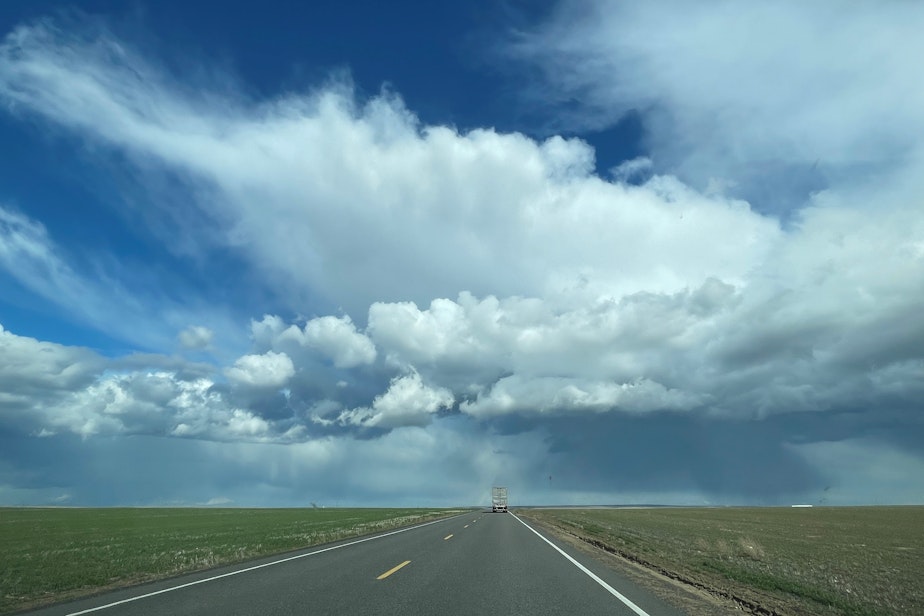
The Pacific Northwest is in the early stages of making a very big switch: from gasoline to electricity.
Electric vehicles are becoming a common sight on Northwest roads, and governments are pushing for them to replace gas-powered cars as soon as possible.
But a lot more infrastructure, from charging stations to transmission lines to clean-power sources, is needed to make that climate-friendly switch.
To see just how far the Northwest has to go to have an electric transportation system, I’m taking a 500-mile road trip across the Northwest. Instead of flying to a journalism conference in Boise, I’ve rented a Chevy Bolt to go overland.
It's a long drive from Seattle, and I'm a little nervous about recharging once I've left the big city for the mountains and sagebrush of the inland Northwest, but let’s go.
Bellevue, Washington. Mile 16.
Sponsored
Driving long distance in an electric car, one thing is almost always on my mind: where to charge up next. You can plug an electric vehicle into any old wall socket, but it would take many hours to fill up on electrons that way. Finding a place to charge up fast is more of a challenge.
“Turn right onto 108th Avenue Northeast, then use the right two lanes to turn right onto Northeast Fourth Street,” the female voice on my phone urges me.
I’ve told it (her) to navigate me to one of two Tesla charging stations in downtown Bellevue, though my trip is barely underway. Supposedly 10% of the Tesla network, the nation’s largest and, by most accounts, fastest and most reliable, is open to non-Tesla drivers like me. I want to see what a high-end charging experience is like.
To find out which Tesla chargers are available, I had to download the Tesla app, though it has led me astray. I pull over after driving in circles, looking in vain for the elusive Tesla chargers, possibly hidden inside some giant condo towers’ gated parking garages. I'll have to keep driving in search of some other source of electricity.
Ellensburg, Washington. Mile 120.
Sponsored
Newer electric vehicles can go 200 or 300 miles on a single charge, roughly comparable to many petroleum-powered cars. Electric-vehicle drivers used to have range anxiety. Now they have charger anxiety. In Ellensburg and several other locations, I find out why.
It takes me about 15 minutes to make the electrons flow at a charging station in downtown Ellensburg. After forgetting my Shell Recharge password, I have to change the password on my phone, then add money from my credit card to my online account, then start the charging process again.
Someday, perhaps, charging an electric car will be as easy as pulling into a gas station with a credit card or even $20 cash, but that day is not today.
I decompress from the frustrating experience by taking a walk around Ellensburg’s historic downtown while my battery drinks up electricity.
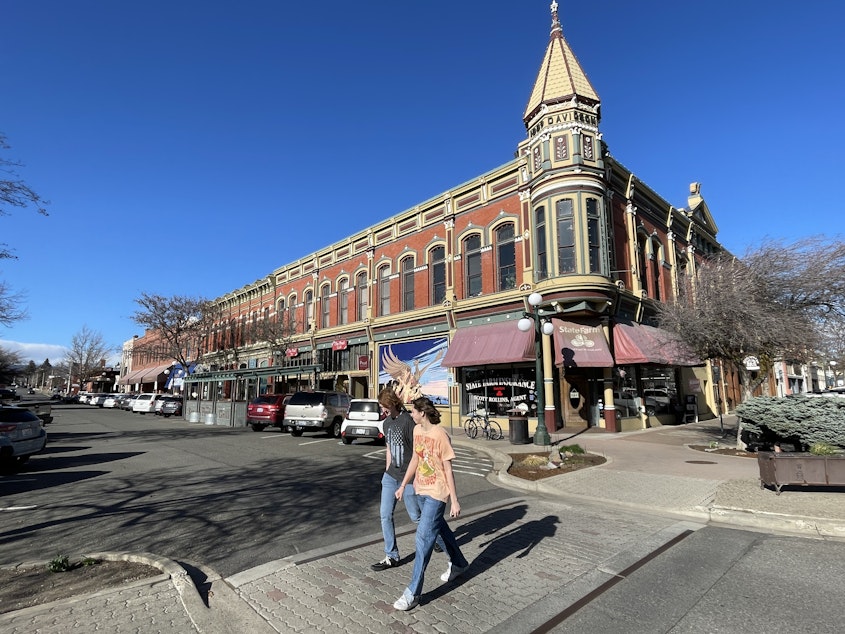
Sponsored
Yakima, Washington. Mile 156.
At one edge of a massive Walmart parking lot in Yakima, a high-speed Electrify America charger rejects two of my credit cards, but the charger next to it works fine. I ask Steve from Walla Walla, driver of a new electric Ford truck, how charging away from home has been for him. (He asks me not to use his last name.)
“It’s a real pain,” Steve says. “It’s slow, and the stations don’t work a lot of the time. Last time I was through here, that one didn’t work. This time, obviously, that [other] one doesn’t work, so there’s a lot of problems with maintenance on them.”
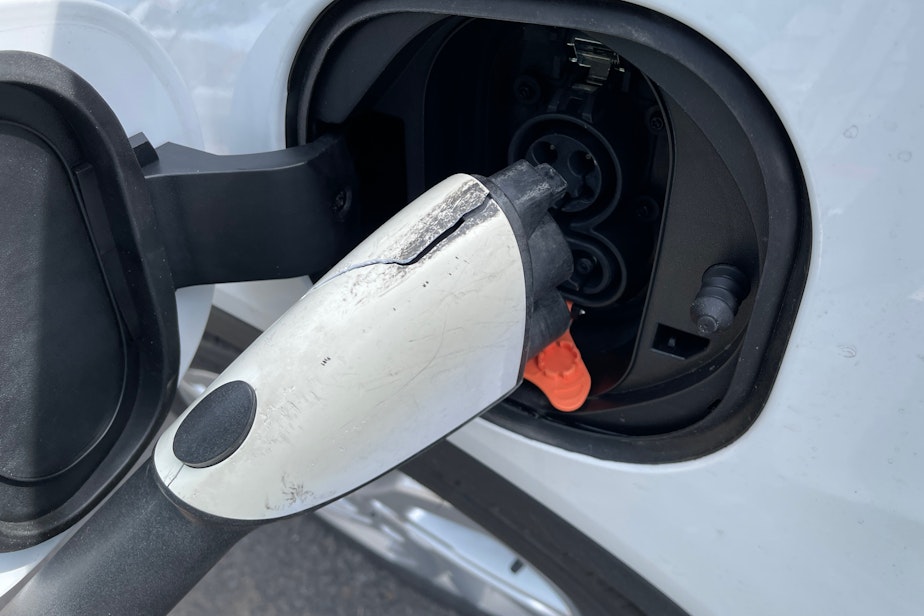
Sponsored
Steve’s experience is backed up by surveys of EV drivers.
“The industry needs to do a better job of maintaining existing charging stations,” a J.D Power Marketing survey concluded in 2022. “The study finds that one out of every five respondents ended up not charging their vehicle during their visit.”
“If you’re driving locally, it’s great, but when you’re doing long trips, road trips, it’s kind of sucky,” Steve says.
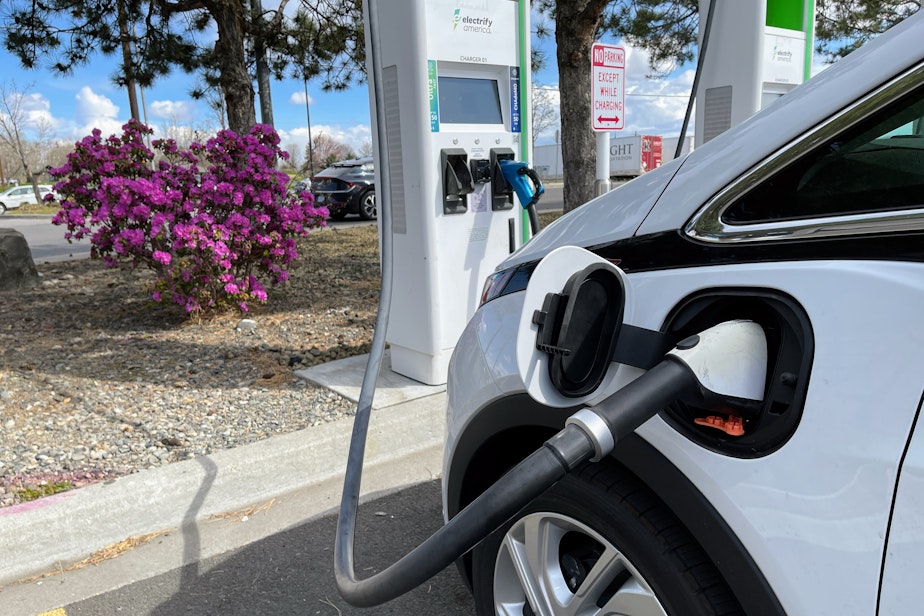
Sponsored
To make the most of our hour of charging, my co-pilot Kathleen and I walk through nearly a half-mile of parking lots and across a six-lane commercial road to grab lunch in a Mexican restaurant along the Yakima River.
Pasco, Washington. Mile 239.
My 500-mile road trip to Idaho is far from typical. Most American car trips are under six miles; the vast majority (90%) are less than 20 miles. Electric vehicles mostly get charged at drivers’ homes or workplaces, and the biggest need for wider EV adoption in America is more charging stations where people live and work.
“So it's great to mandate and say by law, ‘You can't buy a gas car after 2035,’” Garrett Brown with the Mid-Columbia Electric Vehicle Association says, paraphrasing Washington state’s current policy. “But all of these people in these apartments, they've got to charge somewhere.”
The electric vehicle advocate says Eastern Washington can be a challenging place to push back against the internal combustion engine.
“In this community, a lot of people like their diesel trucks and their noisy vehicles,” Brown says. “They actually spend money to modify them to make them noisier and smellier.”
Brown says he’s never had a charging station fail. He’s more likely to find a gas or diesel vehicle occupying the parking space in front of a charger.
We speak outside a Starbucks in Pasco while my car is re-energizing at an EVITA charger. Yet another brand of charger means yet another learning curve. Tap my phone against the reader? Tap my credit card against the reader? Scan the QR code? I fumble with my phone and squint to read electronic screens in the bright sun.
“I have no idea how to use this charging station,” I finally admit.
It turns out I have to create an online account and enter my credit card information before plugging the car in. Figuring all that out takes me about 10 minutes.
Imagine if every time a driver stopped at a different brand of gas station, they had to register for a new account. That would certainly slow down the process of getting back on the road.
Despite the learning curves and the occasional hiccups with charging on the road, Brown says it’s really not hard to go all-electric—at least if you can charge at home.
“I haven't been to a gas station in 10 years,” Brown says. “It’s easy. It really is.”
Brown was a bike-commuting grad student in 1991 when the United States went to war to stop Iraq’s invasion of Kuwait.
“That war was 100% about oil, and it was killing people,” Brown says. “I decided that I didn't want to be a part of that anymore, and at that point, I said I will never buy a gas car.”
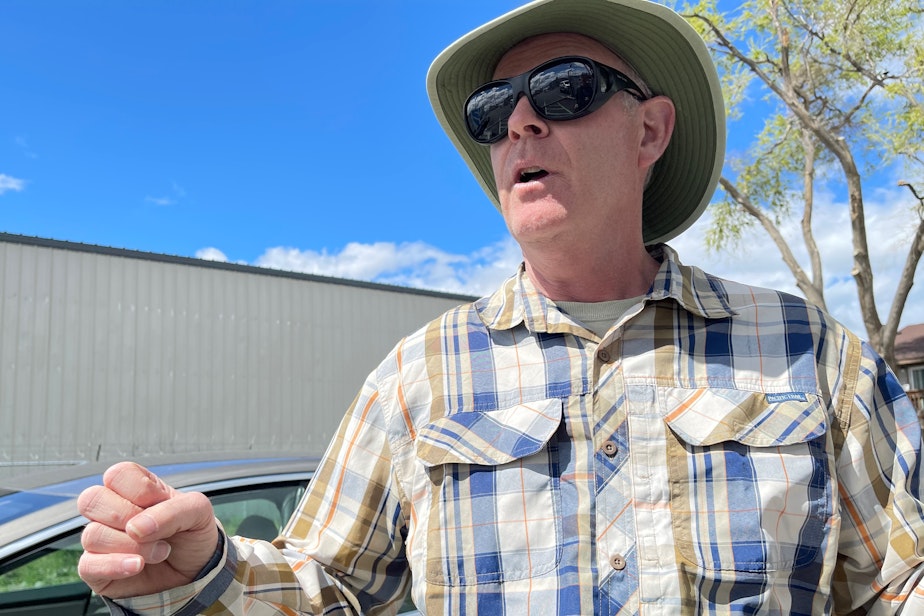
Three decades later, the United States only gets about 11% of its oil from the Middle East, but fossil-fuel emissions are threatening the welfare of the entire planet.
One other selling point for electric vehicles is that, being so energy efficient, they cost little to operate. That advantage diminishes on road trips, however: power from public charging stations can cost 3 to 8 times more than power at home.
“This is akin to going to a football game or a baseball game and buying a beer,” Brown says. “It's not the same price as when you get it at the grocery store. You're a captured customer.”
Seattle City Light aims to install 31 curbside chargers throughout Seattle in 2023, with electricity prices about twice what its residential customers pay.
A utility spokesperson says the price was set to recover the costs of building and operating the curbside chargers.
Pendleton, Oregon. Mile 308.
The Chevy Bolt dashboard indicates how many miles are left on the battery, but it gives a range, not a specific number. Just before Pendleton, it tells me the battery has between 50 and 70 miles of juice left. With the chargers in La Grande still 63 miles away at that point, we decide to play it safe and add a stop in Pendleton.
Outside Pendleton’s Heritage Station Museum, the Bolt charges up flawlessly.
As soon as I plug in to the Chargepoint station, the electrons start flowing.
Successful, painless charging in Pendleton, Oregon, April 2023
We want a full battery before crossing what Matt Noble with the Oregon Department of Transportation calls the “charging desert” of Eastern Oregon.
“It's a desolate drive even in a gas vehicle,” Noble told me as I was planning the trip. “In an EV, it's a little anxiety inducing for, I'm sure, a lot of drivers.”
Blue Mountains, Oregon. Mile 327.
I’ve just made it over 3,600-foot Deadman Pass, which really taxed the battery, but I'm thinking there is going to be enough juice left to make it all the way down to Huntington, past the longest stretch with no chargers on this whole journey. I'm hoping that Deadman Pass isn't followed by Dead Battery Valley another 100 miles down the road.
Oregon Department of Transportation officials expect to add more chargers along the Interstate 84 charging desert in 2025. They plan to double the number of fast chargers statewide over the next five years. Oregon is also subsidizing installation of home chargers, with 70% of the funding dedicated to rural and disadvantaged areas.
La Grande, Oregon. Mile 361.
To play it safe, I’ve stopped in La Grande to charge at an Electrify America station in a Walmart parking lot.
The brightly lit “Ultra Fast” charger says it can deliver power at a rate of up to 150 kilowatts (about enough to light up 1,500 old-school incandescent light bulbs at once).
Nearby “Hyper Fast” chargers claim they can deliver up to 350 kilowatts.
But as I look at the meter as my car drinks up electricity, I see we're only getting about 27 kilowatts, about one-sixth as fast as advertised.
That means we're stuck here in a Walmart parking lot about six times longer than we thought we would be.
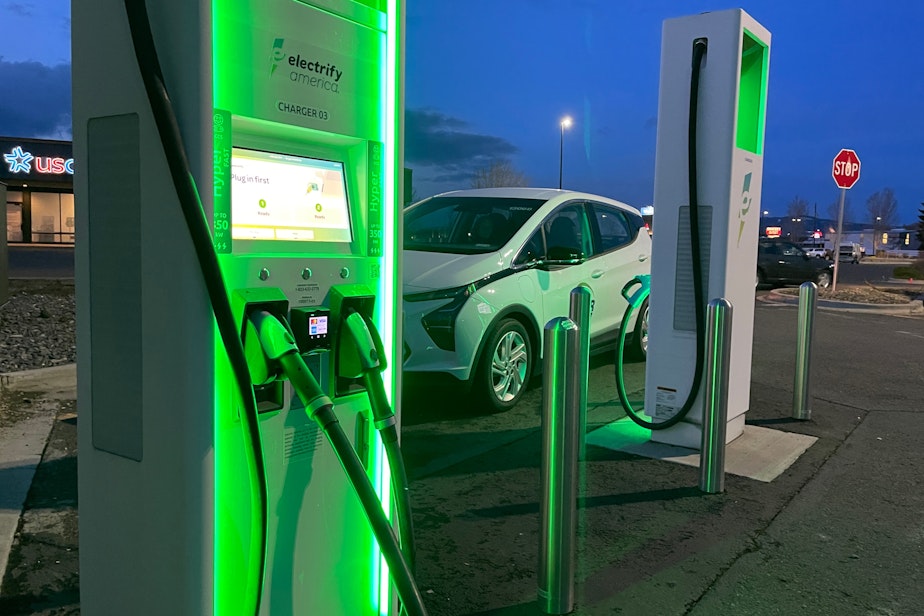
Though I’m inclined to distrust Electrify America’s “up to” claims (the company was formed by Volkswagen as part of its multibillion-dollar punishment for designing its diesel vehicles to cheat on emissions tests), I learn later that the fault probably lies in my own vehicle.
Chevy Bolts are one of the slowest EVs on the market at charging, with a maximum recharge speed of 55 kilowatts, according to InsideEVs.
Huntington, Oregon. Mile 449.
Outside the tiny T&T Country Store in Huntington, one charger rejects my credit cards (for no apparent reason), while a neighboring charger works just fine.
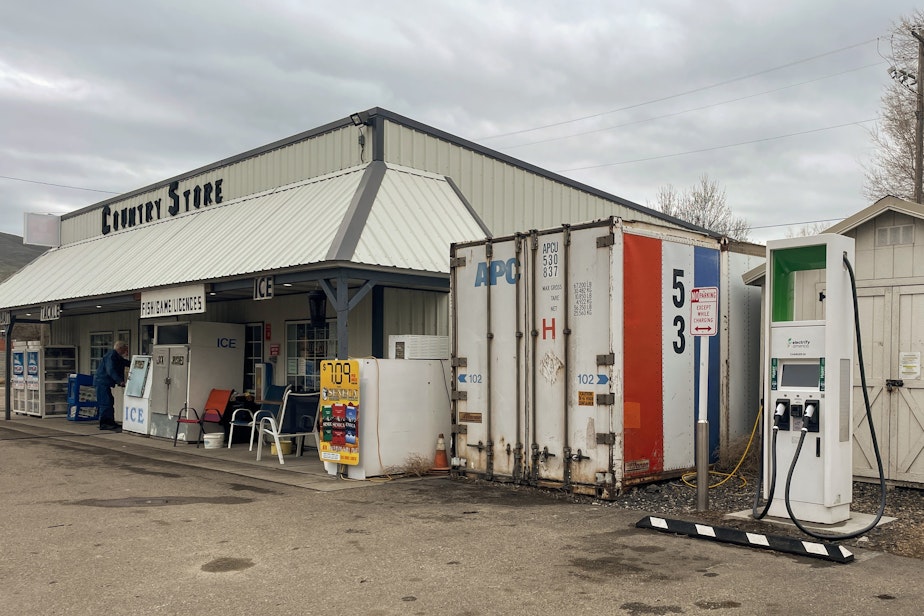
Kate Smith of Pasco is charging her Volkswagen. She and her husband are on their way home from a wedding in Utah. Their family of four drivers has three electric vehicles.
“It’s been very comfortable. It's very quiet. I mean, I've rented gasoline vehicles since [owning EVs]. And I'm like, ‘Oh my God, this thing's so loud—and slow.’ You know, when you're coming off of a stop sign or stoplight.”
Even at the fastest charging stations, filling up on electrons takes much longer than filling up on liquid fuel. Smith says she doesn’t mind the different rhythm of travel.
"I know some people are like, 'No, I want to just like pump my gas and keep driving,'" Smith says. “I don't want to do that. I want to stretch my legs. I want to use the bathroom, you know.”
While our Bolt is slow-charging for an hour, co-pilot Kathleen and I wander down to the Snake River just outside of town to take in some scenery and fresh air before hopping back in the car.
Boise, Idaho. Mile 534.
Made it to Idaho! We had a few delays from chargers that didn't work or we couldn't get access to. But we never came close to getting stranded on the highway, thanks to apps that tell you how far away the next charging station is and how fast it can fill up your battery.
The trip definitely took longer than it would have in a gasoline car—with gas pumps that work in a flash available almost everywhere. But it was quiet, cheap, and a lot less polluting, especially in a car propelled mostly by climate-friendly hydropower (the main source of electricity in the Northwest).
I also learned the hard way that charging slows down dramatically when a battery reaches about 80% full. Savvier EV drivers than me know not to fill up completely at every stop.
“I don't fill up unless I have something to do, like I'm eating lunch,” Garrett Brown told me in Pasco. “Or I only charge enough to get to my next stop.”
“We like to stop every two hours,” Kate Smith told me in Huntington.
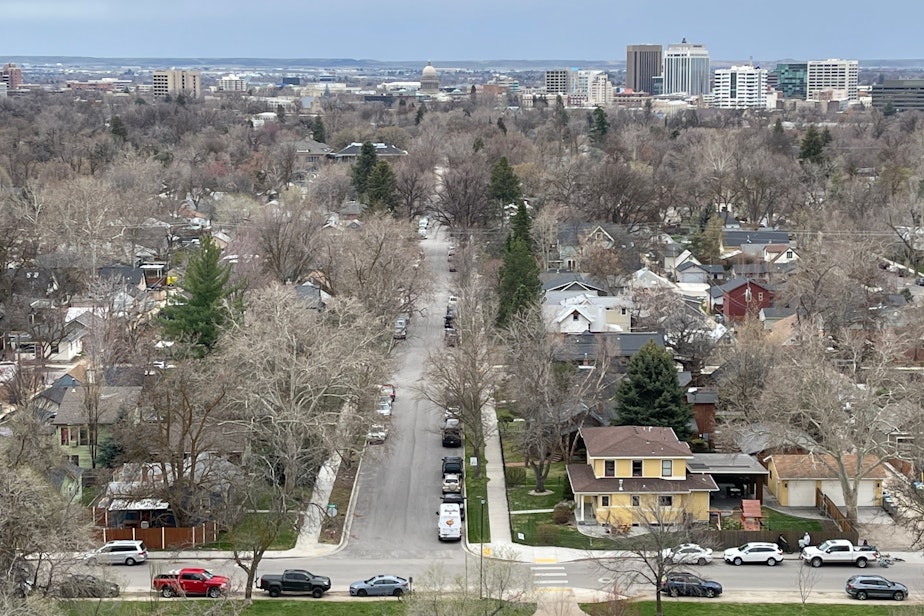
Here in Idaho, big gas-guzzling cars and trucks are even more common, and electric vehicles more rare, than back in Seattle. But some Idahoans do drive electric vehicles, even in the most rural parts of the state.
“We have charging stations already installed. We don't have a lot of them, but we do. We have tribal members driving electric vehicles. We're looking at electric fleets for all of our tribal vehicles,” Nez Perce Tribe Vice Chair Shannon Wheeler tells me at my Boise destination, the annual conference of the Society of Environmental Journalists.
The tribe’s traditional territory spans Idaho, Oregon, and Washington, while its reservation is in Lapwai (“the land of butterflies”) in mountainous north-central Idaho.
“We're still needing fossil fuels. Some of these places are remote, and you really can't get to them,” Wheeler says.
Wheeler says federal infrastructure funding is expanding the opportunities for electric travel in Idaho.
“I think it’s catching on,” he says. “There's a lot of work that needs to be done in that area, but it's gonna happen.”
With dollars pouring in at the state and federal levels, the EV landscape is changing quickly all over the Northwest.
Climate advocates want to see chargers installed as quickly as possible—as long as people who can’t afford their own garages to charge in get to share in the benefits.
They also want to make sure that the climate-friendliest modes of transportation, like buses, biking, and walking, don’t get left behind in the big push for electric cars.




